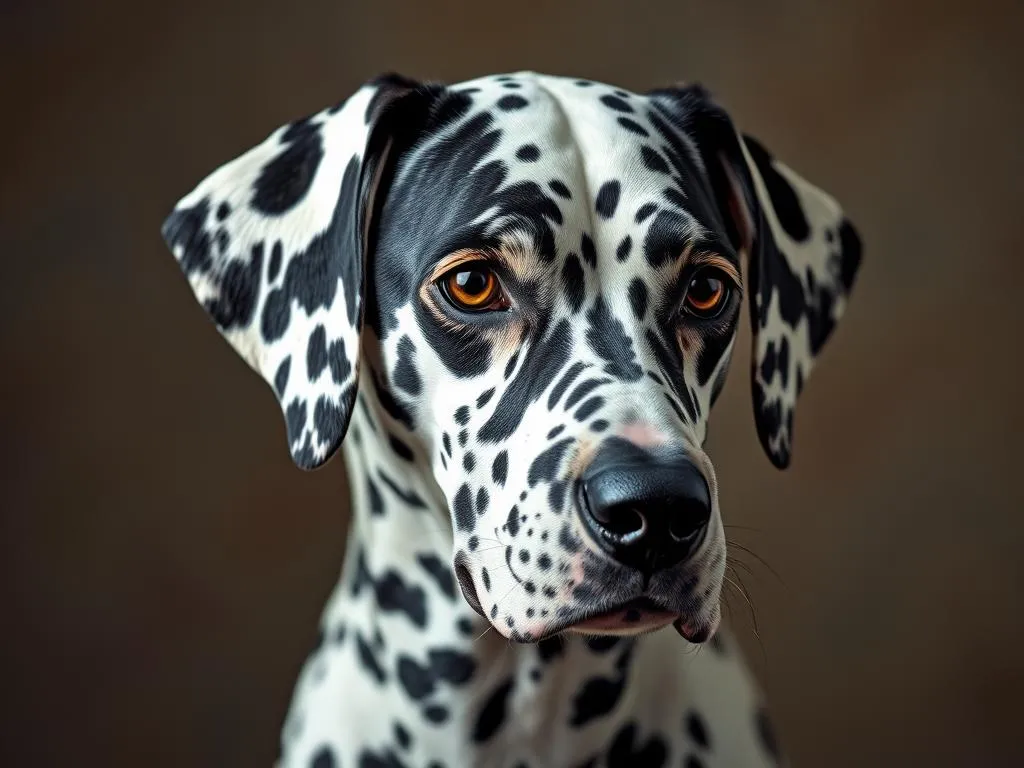
Introduction
Dog breeds play a significant role in our lives, not only as companions but also as working partners and family members. Each breed has unique characteristics that define its behavior, appearance, and suitability for various roles. Among the multitude of breeds, the Dalmatian stands out due to its distinctive look and rich history.
Historically, Dalmatians have served various purposes, from guarding horse-drawn carriages to being firehouse mascots, which have contributed to their popularity. Their striking appearance, characterized by a short coat adorned with spots, has made them cultural icons, particularly in movies and literature. This article aims to explore the fascinating world of Dalmatian colors, providing insights into their genetic background, variations, and the implications of these colors for ownership and care.
Understanding Dog Breeds
Definition of Dog Breeds
A dog breed is a specific strain of domestic dog with distinct characteristics, including size, coat type, temperament, and behavior. These traits are often the result of selective breeding practices aimed at enhancing certain qualities, making breeds suitable for specific tasks or lifestyles. Recognizing these breed characteristics is crucial for potential owners to ensure they choose a dog that fits their lifestyle and needs.
Overview of Dog Breed Categories
Dog breeds can be categorized in various ways, primarily based on their historical functions and characteristics. Here are some of the main categories:
-
Working Breeds: These dogs are bred to perform tasks such as guarding, pulling sleds, or serving as rescue dogs. Examples include Rottweilers and Siberian Huskies.
-
Sporting Breeds: Bred for hunting and retrieving, these breeds are often active and require regular exercise. Examples include Golden Retrievers and Labrador Retrievers.
-
Hound Breeds: Known for their keen sense of smell and tracking abilities, hounds are often used in hunting. Examples include Beagles and Bloodhounds.
-
Toy Breeds: These small dogs are primarily companion animals, known for their affectionate nature. Examples include Chihuahuas and Pomeranians.
-
Herding Breeds: Bred to manage livestock, these dogs are intelligent and trainable. Examples include Border Collies and German Shepherds.
-
Terrier Breeds: Originally bred to hunt vermin, terriers are feisty and energetic. Examples include Jack Russell Terriers and Bull Terriers.
-
Non-Sporting Breeds: A diverse group that does not fit into the other categories, these breeds vary in size and characteristics. Examples include Dalmatians and Bulldogs.
The Role of Genetics in Dog Colors
The colors of a dog’s coat are determined by genetics, which plays a vital role in defining breed-specific traits. The basic genetics of canine coat colors involve multiple genes that influence pigmentation, pattern, and distribution of colors. Understanding these genetic factors is essential in appreciating the variations seen in breeds like the Dalmatian.
The Dalmatian Breed
Historical Background
The origin of the Dalmatian breed is somewhat shrouded in mystery, with roots tracing back to ancient times. Historically, Dalmatians were used as carriage dogs, protecting horses and their owners from potential threats. They also served as firehouse mascots in the 19th century, known for their ability to run alongside fire trucks and clear the way for firefighters.
As the breed evolved, Dalmatians became popular in various roles, including as family pets and show dogs. Their unique appearance and lively personality have made them a beloved breed across the globe.
Physical Characteristics
Dalmatians are known for their distinctive physical features. They typically stand about 19 to 24 inches tall and weigh between 45 to 70 pounds. Their build is athletic and muscular, designed for agility and endurance.
The Dalmatian coat is one of its most defining features. It is short, dense, and smooth, providing minimal insulation. This breed is famous for its black or liver spots on a white background, which contributes to its striking appearance. The spots are usually round, varying in size, and evenly distributed across the body.
Dalmatian Colors
Common Color Patterns
When discussing Dalmatian colors, the first thought often goes to the traditional black-spotted Dalmatians. However, there are several variations worth noting:
-
Black-Spotted Dalmatians: The most recognized color pattern, featuring black spots on a white coat.
-
Liver-Spotted Dalmatians: These Dalmatians are marked with brown spots instead of black, offering a slightly different aesthetic.
-
Other Variations: Rare color patterns include blue-spotted Dalmatians, which have a grayish coat with blue spots, and brindle Dalmatians, characterized by a mix of darker and lighter stripes in their coat.
Genetics of Dalmatian Colors
The colors of Dalmatians are controlled by specific genes. The primary gene responsible for the black or liver coloration is known as the “B” locus. In this case:
- B (black): This gene leads to the formation of black pigment in the spots.
- b (liver): This gene results in the production of brown pigment, leading to liver spots.
The presence of these genes determines whether a Dalmatian will be black-spotted or liver-spotted. Understanding this genetic background is essential for breeders and owners alike, as it helps in predicting coat colors in puppies.
Rare and Uncommon Dalmatian Colors
While the traditional black and liver spots dominate the breed’s appearance, there are rare color variations that may intrigue enthusiasts. These include:
-
Blue-Spotted Dalmatians: Though not officially recognized in breed standards, these Dalmatians feature a bluish-gray coat with darker spots.
-
Brindle Dalmatians: Characterized by stripes of dark and light colors, brindle Dalmatians are also considered rare and not typically seen in show rings.
It’s essential to note that some rare color variations may come with health implications. For instance, white Dalmatians (which may occur due to a lack of pigmentation) can be prone to deafness. This highlights the importance of responsible breeding practices to avoid perpetuating health issues associated with specific colors.
Caring for a Dalmatian
Grooming Needs
Proper grooming is crucial for maintaining the health and appearance of a Dalmatian’s coat. Due to their short hair, they do not require extensive grooming; however, they do shed, especially during seasonal changes. Regular brushing helps reduce shedding and keeps the coat healthy. Recommended grooming practices include:
- Weekly brushing: Using a soft-bristle brush or rubber curry brush to remove loose hair and dirt.
- Bathing: Dalmatians should be bathed only when necessary to avoid stripping their coat of natural oils.
Health Considerations Related to Coat Colors
Dalmatians are generally healthy dogs, but certain health issues can be linked to their coat colors. For example, white Dalmatians are more prone to congenital deafness. Studies have shown that there is a correlation between the lack of pigmentation and hearing loss, making it crucial for potential owners to be aware of such risks.
Additionally, Dalmatians may experience health issues such as urinary stones and skin allergies. Regular veterinary check-ups and a balanced diet can help mitigate these concerns.
Training and Socialization
Dalmatians are intelligent and energetic dogs, making training and socialization essential parts of their upbringing. Training should begin early to establish good behavior and ensure they become well-adjusted adults. Recommended training techniques include:
- Positive reinforcement: Using treats and praise to encourage desired behaviors.
- Socialization: Exposing your Dalmatian to various environments, people, and other animals helps them become confident and well-behaved.
Popularity and Cultural Significance of Dalmatians
Dalmatians in Popular Culture
Dalmatians have captured the hearts of many, thanks in part to their portrayal in popular culture. One of the most notable representations is in Disney’s animated classic “101 Dalmatians,” which introduced the breed to a broader audience and solidified its status as a beloved family pet. This cultural impact has significantly influenced public perception, often leading to an increase in demand for Dalmatians as pets.
Current Trends in Dalmatian Ownership
Today, Dalmatians remain popular among dog enthusiasts. They are cherished for their loyalty, energetic nature, and unique appearance. However, prospective owners should consider the breed’s needs, including regular exercise and socialization, to ensure that they can provide a suitable environment for these dynamic dogs.
Demographics of Dalmatian owners often include active families and individuals who appreciate the breed’s playful spirit and striking looks. As awareness of responsible breeding and ownership grows, there is a shift towards adopting Dalmatians from shelters and rescues, emphasizing the importance of giving these dogs a loving home.
Conclusion
Understanding Dalmatian colors goes beyond mere aesthetics; it encompasses the breed’s history, genetics, and health considerations. From their black and liver spots to the rare variations, each color carries its own significance and charm.
As with any breed, responsible ownership, proper care, and an appreciation of their unique traits are essential in fostering a healthy and happy relationship with Dalmatians. By prioritizing these aspects, owners can ensure that their Dalmatians thrive, both in health and in spirit.
In summary, Dalmatians are not just visually captivating; they are a breed rich in history and personality. Embracing their unique colors and characteristics fosters a deeper connection between owners and their canine companions.









